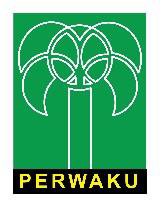Evaluation of the Cipalabuan River's water quality and measures for reducing water pollution in the Sukabumi Regency
Abstract
ABSTRAK
Sungai Cipalabuan berfungsi sebagai ekosistem yang menyediakan habitat bagi banyak spesies dan sebagai sumber air untuk industri, pertanian, dan minum. Namun, meningkatnya aktivitas industri dan pemukiman menimbulkan ancaman terhadap kuantitas dan kualitas air sungai. Akhir-akhir ini sungai tersebut menghasilkan limbah cair dan padat sehingga menurunkan kualitas air sungai. Sungai Cipalabuan yang mengalir melalui pusat kota dari hulu ke hilir mengumpulkan zat-zat pencemar yang berasal dari buangan aktivitas masyarakat di sepanjang aliran sungai, termasuk limbah cair dan padat. Dengan memantau dan menghitung kualitas air pada lokasi dan waktu tertentu, penelitian ini berupaya mengetahui kondisi kualitas air saat ini. Untuk membuat desain penjelasan sekuensial, pendekatan metode campuran digunakan, yang memadukan metodologi kuantitatif dan kualitatif secara paralel. Kualitas air di Sungai Cipalabuan dipengaruhi oleh beberapa faktor, antara lain tindakan pihak yang memanfaatkan sungai sebagai tempat pembuangan sampah, ketidaktahuan masyarakat akan perlunya pengendalian pencemaran, persaingan kepentingan dalam pengelolaan sumber daya air, dan kurangnya sumber daya manusia. kerjasama antar instansi yang berwenang dalam pengelolaan sumber daya alam dan pengendalian pencemaran air.
Keywords
References
Agustiningsih, D. (2012). Study of the Water Quality of the Blukar River in Kendal Regency in Efforts to Control River Water Pollution. Semarang: Diponegoro University.
Asdak, C. (2010). Hydrology and Watershed Management. Yogyakarta: Gadjah Mada University Press.
Campo M. A., Chahor, Y., Gastesi, R., & Lopez, J. (2010). Sediment production and water quality of watersheds with contrasting land use in Navarre (Spain). Agricultural Water Management, 97:1683-1694.
Effendi, H. (2003). Water Quality Study: For Management of Water Resources and Environment. Yogyakarta: Kanisius.
Hadi, A. (2007). Collection Management Principles Sample Environment. Jakarta: Gramedia Pustaka Utama.
Harson, E. (2010). Evaluation of dissolved oxygen self-recovery ability of upper Citarum River water. Limnotek Journal, 17(1): 17-36.
Herlambang, A. (2006). Water pollution and its mitigation strategy. JAI, 2(1): 16-29.
Mulyanto, H. R. (2007). Rivers, Functions and Properties. Yogyakarta: Penerbit Omah Ilmu.
Pambudi, A. S. (2022). Balancing infrastructure, ecosystem conservation, and community approaches in Citarum watershed integrated development planning. Indonesian Journal of Applied Environmental Studies, 3(1): 34-41.
Pohan, D. A. S., Budiyono, B., & Syafrudin, S. (2016). Analysis of river water quality to determine designation from an environmental aspect on the Kupang River, Pekalongan City. Jurnal Ilmu Lingkungan,14(2): 63-71.
Priyambada, I. B., Oktiawan, W., & Suprapto, R. P. E. (2008). Analysis of the effect of differences in land use functions on River BOD contamination loads: Case study of the Serayu River, Central Java. Precipitation Journal. 5(2): 55-62.
Purnomo, A.R. (2010). Study of the Water Quality of the Sengkarang River in Efforts to Manage Watersheds in Pekalongan Regency [Thesis]. Diponegoro University, Semarang.
Rahayu, S., Widodo, R. H., van Noordwijk, M., Suryadi, I., & Verbist, B. (2013). Water Monitoring in Watersheds. Bogor: CIFOR-World Agroforestry Centre.
Rahmawati, D. (2011). The Effect of Industrial Activity on the Diwak River Water Quality in Semarang Regency in Efforts to Control River Water Pollution [Thesis]. Diponegoro University, Semarang.
Saaty, T. L. (2008). Decision making with the Analytic Hierarchy Process. Int. Journal of Services Sciences, 1(1): 83-98.
Said, N.I. (2006). Pengelolaan limbah air domestik di DKI Jakarta. JAI, 2(2): 169-177.
Sugiyono. (2012). Mixed Methods. Bandung: Penerbit Alphabet.
Suripin. (2004). Resource Preservation Land and Water. Yogyakarta: ANDI Publisher.
Tchobanoglous, G., Burton, F. L., & Stensel, H. D. (2013). Wastewater Engineering: Treatment and Reuse. Fourth Edition. New York: McGraw Hill Inc.
Wardhana, V. (2004). Impact of Environmental Pollution. Yogyakarta: ANDI Publisher.
Yetty, E., Soedharma, D., & Haryadi, S. (2011). Evaluation of the water quality of rivers in the upper Brantas Watershed area of Malang in relation to land use system and its Surroundings People Activity. JPSL Journal, 1(1): 10-15.
Yuliastuti, E. (2011). Study of Ngringo River Water Quality in Efforts to Control Water Pollution [Thesis]. Diponegoro University, Semarang.
Zhou, H. (2009). Population growth and industrialization. Economic Inquiry, 47(2):249-265.
DOI: 10.33751/injast.v5i1.8203
 Abstract views : 186
Abstract views : 186
Refbacks
- There are currently no refbacks.
Copyright (c) 2024 Indonesian Journal of Applied Environmental Studies

This work is licensed under a Creative Commons Attribution-NonCommercial-ShareAlike 4.0 International License.













